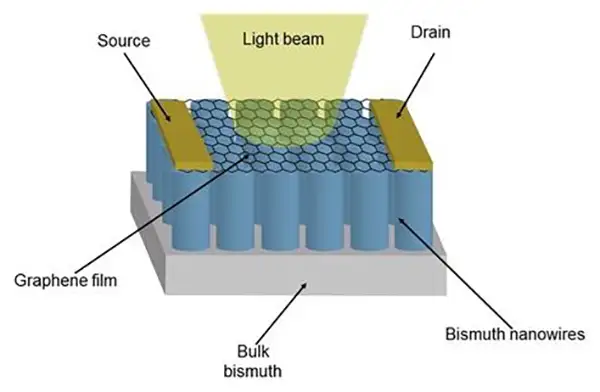Nanowire Arrays
quantum wires
Sensors based on nanowires consist of extremely fine wires made of metals and alloys, also known as quantum wires. They generally have a diameter of less than or about 100 nanometers. Because of their tiny size and structure, they exhibit quantum mechanical properties that do not occur in materials of larger dimensions.
When the nanowires interact with the environment, such as an electric field or a magnetic field, their quantum mechanical state changes. This change can be detected by means of electronic or optical techniques, e.g. via the changes in conductivity or, if semiconductor materials are used, via the emission of light. In this way, data on the strength of a magnetic field, an electric field, or other parameters can be acquired.
Advantages:
- small size, so advantageous in applications where space constraints are a factor
- high sensitivity allows precise measurements of a wide range of physical quantities at the subatomic level
- versatility allows adaptation to specific applications and measurement requirements
- fairly fast response times are advantageous in real-time measurements and rapid analysis applications
Disadvantages:
- Due to high sensitivity, susceptible to decoherence from external disturbances such as electromagnetic interference and temperature fluctuations.
- Fabrication of nanowire sensors often requires complex nanomanufacturing and materials science techniques, which can lead to scaling and cost challenges.
Applications: Materials characterization, in nanotechnology, environmental monitoring, and medical imaging, Nanowire array-based cameras enable high-resolution imaging at the atomic level.

Schematic design of a novel room temperature photodetector device using semimetallic bismuth nanowire arrays in conjunction with graphene. Due to the generation and transfer of photocarrier pairs at the interface, the photocurrent generated by the built-in interface field is robust without affecting the detection spectrum. Image taken from Photocurrent in Bismuth Junctions with Graphene by courtesy of Tina Brower-Thomas.
